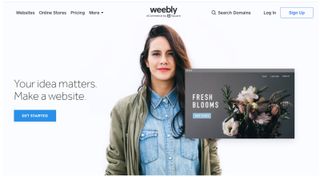In 2011, ICANN, the body that governs addresses on the internet, recently made the decision to allow brands and organisations to apply for and manage their own unique top-level domains (TLD). Businesses (and others) that submitted a successful application and met all of ICANN’s requirements are about to have their name featured on the right side of the dot in web addresses for the first time. In ICANN’s 'dot Brand' new world, you can expect to see domains such as .CHANEL or .NIKE alongside familiar domains such as .COM, .INFO and .ORG. In short, brands are no longer constrained to the left of the dot (as in 'nike.com'), but can now have their own identity at the very top level (as in 'sports.nike').
Dawn of a new domain
The internet’s makeover will begin to show up publicly later this year; that’s when we expect to see the first of hundreds of new domains that will be launched. ICANN received almost 2,000 applications – some for branded domains such as .HSBC, but also applications for generic terms like .FOOD and for geographic regions like .LONDON and .RIO.
The decision to expand the TLD system was made to introduce greater internet innovation and competition. One key innovation is to enable brands to free themselves from the need to market under irrelevant names like '.com' or 'Facebook', and focus entirely on their own identity. Since domain names are now a critical component of a brand’s identity, ICANN’s gateway to TLD ownership represents a turning point in brand management on the internet. When the new domains launch later this year, we'll certainly see revised marketing strategies from these brands, who will be keen to reap the advantages such domains offer, including a strengthened online identity, improved security and new possibilities for customer engagement.
However, dot Brands also present benefits to online consumers. In particular, these domains will inject greater confidence into the ecommerce space, an area that has been plagued with counterfeiting and other security issues. By ICANN mandate, all new TLDs must be DNSSEC enabled. This relatively security new technology helps ensure that consumers who type in an address with a dot Brand extension will arrive at the intended site, instead of a phishing or other counterfeit-type site. Especially for shoppers of luxury goods or pharmaceuticals, dot Brand addresses finally enable confidence that the goods are from a legitimate source. Furthermore, since each dot Brand is completely controlled by the brand owner such as Rolex, they can exercise total control over who is permitted to use a .ROLEX web address.
Another key innovation is the introduction of non-Roman scripts for top-level domains. This will enable Chinese character addresses, as well as addresses in Cyrillic, Korean, Japanese, Hindi and so on … thus opening up the internet to millions of new users.
Without the expansion of top level domains, many potential participants in the global internet may have continued to find themselves excluded. The multi-language internet is critical to bridging the digital divide, particularly when internet availability expands to non-English speaking areas. For global retailers and marketers, non-Roman script names present the opportunity to connect with the world’s growing markets in local languages like Arabic, Russian and Chinese. Amazon is one of the first to move into this space with its application for (Japanese script for “consumer electronics”) while L'Oral has opted for ... (the Chinese transliteration of “L'Oral”).
Dot foes?
Despite the benefits, the prospect of dot Brand top-level domains have generated controversy and disagreement. Some opponents disagree with businesses being allowed to apply for generic terms such as .BEAUTY, while religious and conservative groups object to domains such as .ISLAM or .SEXY. Others have voiced concerns about players like Amazon and Google reinforcing their dominant market positions and monopolising entire online categories as with the respective applications for .BOOKS and .SHOP.
Get the Creative Bloq Newsletter
Daily design news, reviews, how-tos and more, as picked by the editors.
However, these terms exist now at the second level in many existing domains (for example, beauty.com, beauty.info) and have not caused any particular problems. Further, generic terms have been trademarked in various jurisdictions for decades. Given these facts, the opportunity to have them at the top level of a domain name seems to be a natural evolution.
Standing out in a dot Brand crowd
Although the initial application period closed last year, ICANN has said that the opportunity to own a TLD will come again in the future once the first batch of dot Brands are delegated and active. Even if you missed the first round, you can put other proactive measures in place to help ensure your brand is not overlooked in the new, branded online landscape.
First, businesses should ensure that its main website address is the central location for all digital assets. Diverting an online audience to other channels, whether it’s a Facebook page or Twitter handle, effectively reroutes them to another company and dilutes a business’s own online brand presence. While a social media presence is essential, every brand needs its own unique home that can be completely controlled by the company’s brand management and where customers cannot be tracked or otherwise exploited by a third party.
Additionally, with Forrester predicting that mobile commerce is set to quadruple to $31 billion in the next five years, preparing for the m-commerce boom is essential for competing in the new online environment. Consumers now expect a seamless online experience, regardless of the type of device used to access a business’s website. To that end, businesses must ensure that existing websites are optimised for mobile viewing.
While the success of the new TLDs is yet to be determined, one thing is for sure: the internet is continuing to grow and play an ever-larger role in our lives. Regardless of whether a business has applied for a dot Brand, the tide of change sweeping across the internet means businesses need to ensure their digital presence is in order in 2013 and beyond.




